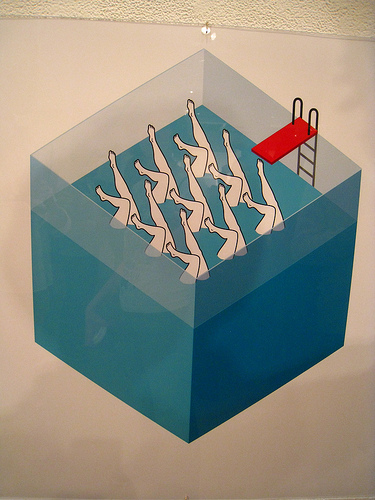Here in New York City, we have an institution known as The Learning Annex. It was started by an enterprising guy in his studio apartment in 1980, and for those who don’t live here, studio digs in the city average in the 300-600 square foot range. So this was certainly no small feat, or foot, as the case may be. The Annex is now the largest adult education school in the country with events held in other states and online as well. Over the weekend, Husband and I attended one of their most popular programs at the midtown Hilton Hotel known as One Day University.
The concept is to gather renowned and respected professors and lecturers from the top universities, and have them speak on their area of expertise to those who are already interested in the topic, as well as those who wish to find out more. This past weekend offered talks by author Joyce Carol Oates and former governor Mario Cuomo. Because Husband and I operate out of different cortexes of the brain, we wound up scheduling the entire day without a single class together, giving us plenty to talk about at lunch. Husband attended lectures on economics, politics, and the Supreme Court. I went for philosophy, psychology, and Joyce Carol Oates.
I was expecting to love the literature lecture the most, but it was the psychology one that grabbed me. It was entitled “How Our Intuitions Deceive Us” and was given by Christopher Chabris, a Harvard educated psych professor at New York’s Union College. Chabris and Daniel Simons co-authored The Invisible Gorilla, a book exploring our abilities and inabilities to pay attention and make judgments based on what we think we know. The thing lecturers should take away from this entry is that audience participation cannot be overrated.
The first thing Chabris did was to call the names of ten members of the audience out of the hundreds in attendance, and announce that he was giving them individually prepared personality profiles based on the information they gave when they registered for the Learning Annex program. They were instructed to look privately at the profile and decide how well it described them. He said to please keep it folded and we’d get back to them later.
Then he showed us the following two-minute video of an experiment he and Simons conducted.
PLEASE WATCH VIDEO BEFORE CONTINUING
How did you do? Personally speaking, I was a fairly textbook case in that I never saw it. Any of it. The gorilla, the curtain color, or the player disappearing. I did, however, get the number of passes correct, so I was feeling all superior until it was repeated and I saw all the activity I missed. Fascinating. Chabris calls this The Illusion of Attention, or our inability to see unexpected events when we are concentrating on one key thing. We may think we’re noticing everything that’s important – the façade of multitasking – but we are sorely missing the mark. It is the reason cell phone use in cars is such a heinous safety hazard. The concept is coined, rather brilliantly, as inattentional blindness.
Back to the individual personality profiles of the ten audience members. All the recipients rated their profile as 75-80% accurate in describing them. Here’s the kicker: All the profiles were identical. They all had statements like: I can achieve so much more than I have; my daily life is very stressful; I want to feel more satisfied in my job and relationships. Cynics might call this The Illusion of Individuality, but I like to think of it as The Song of Humanity. Our struggles are universal; how we handle them is what makes us individuals. And now that you’re done reading this, try and imagine what you missed happening around you in the meantime.
Daughter’s Featured Fotos equal Art Squared




